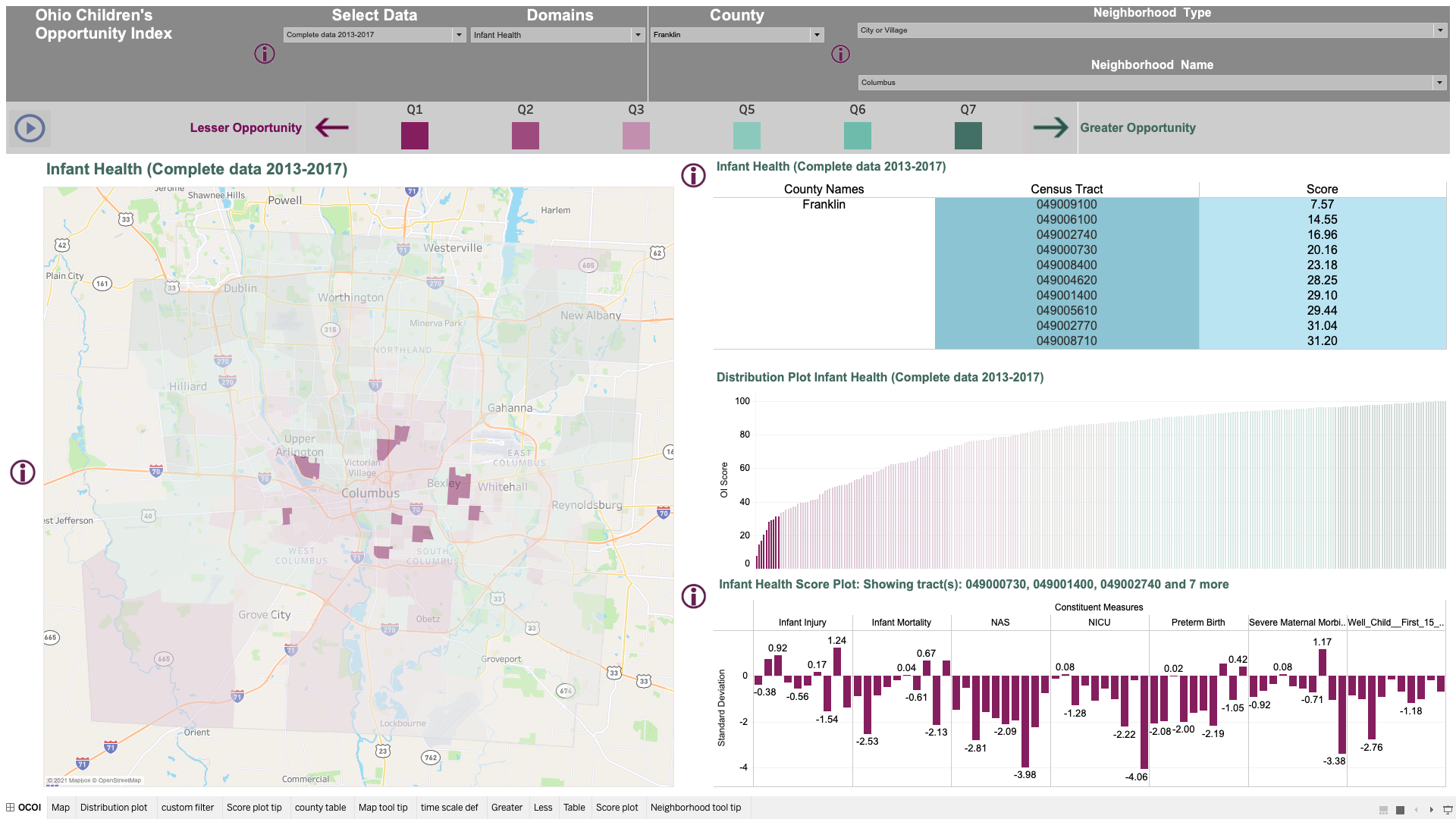Communicating Area-level Social Determinants of Health Information: The Ohio Children’s Opportunity Index Dashboards
Pallavi Jonnalagadda, Christine M Swoboda, Priti Singh, Harish Gureddygari, Seth Scarborough, Ian Dunn, Nathan Doogan, Naleef Fareed
View presentation:2021-10-24T18:00:00ZGMT-0600Change your timezone on the schedule page
2021-10-24T18:00:00Z

Abstract
Social determinants of health (SDoH) can be measured at the geographic level to convey information about neighborhood deprivation. The Ohio Children’s Opportunity Index (OCOI) is a multi-dimensional area-level opportunity index comprised of eight health dimensions. Our research team has documented the design, development, and use cases of dashboard solutions to visualize OCOI. The OCOI is a multi-dimensional index spanning the following eight domains or dimensions: family stability, infant health, children’s health, access, education, housing, environment, and criminal justice. Information on these eight domains is derived from the American Community Survey and other administrative datasets maintained by the state of Ohio. Our team used the Tableau Desktop visualization software and applied a user-centered design approach to developing the two OCOI dashboards— main OCOI dashboard and OCOI-race dashboard. We also performed convergence analysis to visualize the census tracts, where different health indicators simultaneously exist at their worst levels. The OCOI dashboards have multiple, interactive components: a choropleth map of Ohio displaying OCOI scores for a specific census tract, graphs presenting OCOI or domain scores to compare relative positions for tracts, and a sortable table to visualize scores for specific county and census tracts. Stakeholders provided iterative feedback on dashboard design in regard to functionality, content, and aesthetics. A case study using the two dashboards for convergence analysis revealed census tracts in neighborhoods with low infant health scores and a high proportion of minority population. The OCOI dashboards could assist end-users in making decisions that tailor health care delivery and policy decision-making regarding children’s health particularly in areas where multiple health indicators exist at their worst levels.